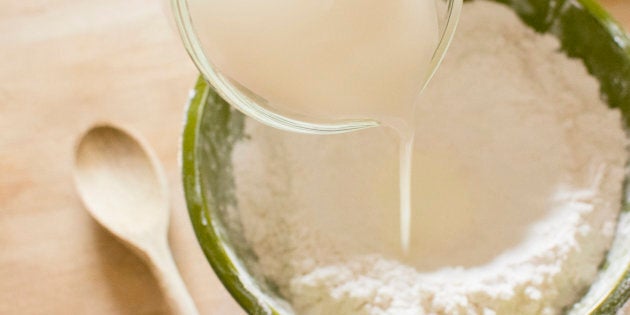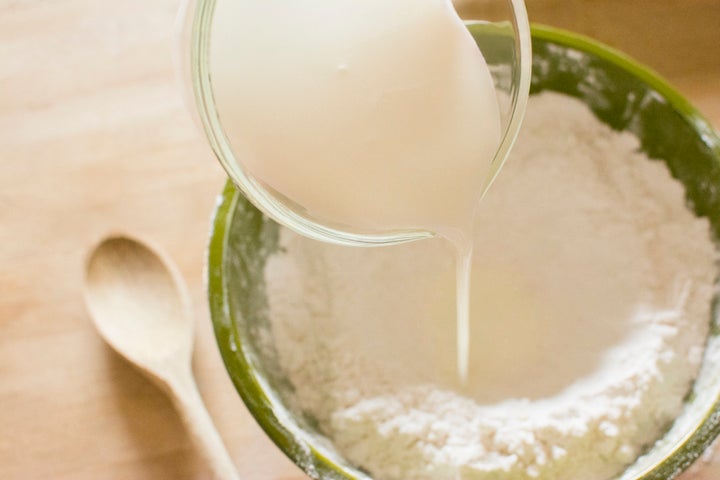
It makes our favorite morning pancakes, is irresistible when baked in a biscuit, and it’s the reason ranch dressing exists. It’s buttermilk, and it is one of the most treasured kitchen ingredients.
We know we love it, but how many of us know what buttermilk is? Like, really, actually know what it is. We’re going to break it down for you.

Buttermilk used to be the liquid left behind after cream or whole milk was churned into butter. It was often sour because the cream used to make the butter was also soured or “ripened.”Refrigeration wasn’t always available, and cream and milk would ripen fairly quickly. Ripening meant naturally-occurring bacteria would ferment the dairy, converting milk sugars into lactic acid. And after the cream or milk was churned into butter, the resulting liquid would be thick, sour and wonderful in baked goods. (When buttermilk reacts with baking soda in baked goods, it means you get a better rise ― and we all want that.)
But today almost all cream and milk is pasteurized, and the high heat that occurs during pasteurization kills off those naturally-occurring bacteria. So now most buttermilk is made in dairy processing plants by injecting enzymes into low-fat milk and reinforcing it with salt and thickeners like carrageenan.
Many of us don’t keep buttermilk stocked in the kitchen at all times, and far too many of us have found ourselves making pancakes when we realized this lamentable fact. Don’t let your kitchen’s lack of buttermilk get between you and your morning stack: You can actually make buttermilk at home. Just add one tablespoon of vinegar or lemon juice to one cup of low-fat milk. Give it 10 minutes, and bam, homemade “buttermilk.” Check out how it’s done:
And now that you can make your own, here’s everything you should be using it for.
